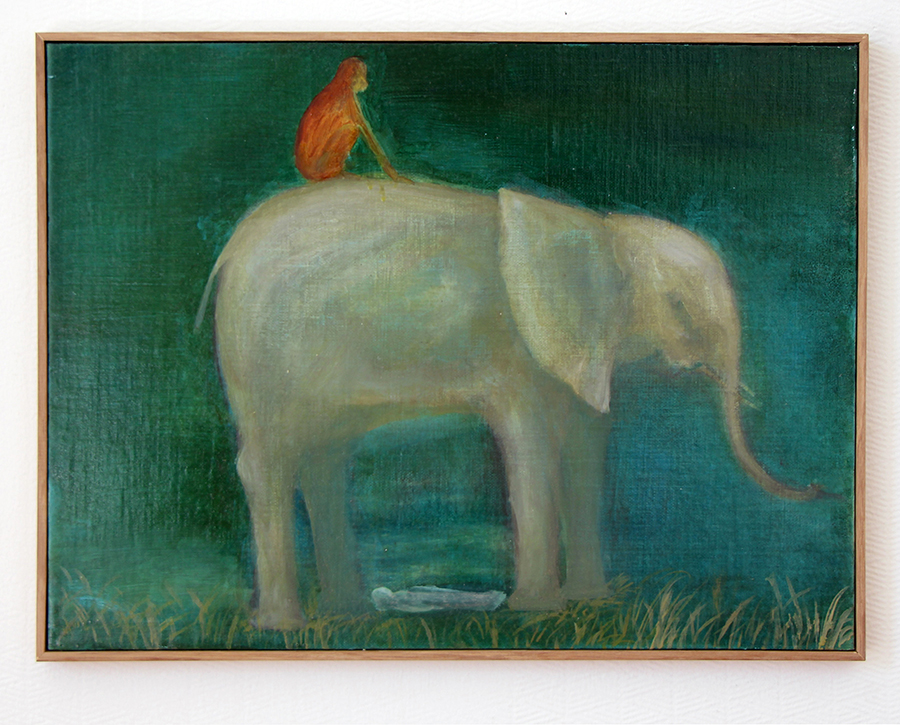Marie Zolamian est l’invitée du Comité muZee 02, association des amis du musée d’Ostende et qui, à ce titre, promeut le cycle « Enter », une série d’expositions monographiques consacrées à la jeune scène artistique.
Exposition du 28 octobre 2017 au 28 janvier 2018.
Vernissage le 27 octobre 2017
FR
Le travail de Marie Zolamian (Beyrouth, 1975, vit et travaille à Liège) fonctionne comme une suite de séquences. Ainsi constitue-t-elle au fil du temps un corpus qui constitue un documentaire expérimental d’une ethnologie fictionnelle, l’expérimentation d’un auto-enracinement dans un monde globalisé qui mixte des modes de vie, des pensées et des histoires tant orientales qu’occidentales. « Je tente de m’approprier, déclare Marie Zolamian, des patrimoines de communautés d’élections qui me sont étrangères ; j’interroge la notion d’affiliation et d’appartenance à une communauté, à un territoire. Ces « exils choisis » dans des micro-localités me font rencontrer des micro-histoires. Elles ont pour trait commun de reposer sur un récit, un témoignage qui touche l’individu et la collectivité, à partir d’un attachement subjectif à un lieu ou à un objet hérité. Et tout ceci se vit comme des tentatives d’intégration répétées, là où des relations – parfois discordantes – s’établissent entre l’identité, la tradition et l’authentique, entre un lieu et une culture ». Le processus de travail s’élabore au fil d’une série de portraits, de liens entre un environnement et une histoire, qu’elle soit personnelle ou collective. Chaque portrait, chaque étape est l’archive d’une trajectoire visuelle, un inconnu ici se déplaçant vers un inconnu-là.
EN
Marie Zolamian’s (born in Beirut in 1975; lives and works in Liège) work takes the form of a series of sequences. Accordingly, she is building up a body of work over time, which amounts to an experimental documentary on a fictional ethnology, the experiment of self-rooting in a globalised world, which mixes lifestyles, thoughts, and stories that are both Eastern and Western. “I am trying to take ownership of the heritage of chosen communities that are foreign to me; I am questioning the concept of affiliation and belonging to a community, or a region”, says Marie Zolamian. These “chosen exiles” in micro-localities enable me to encounter micro-stories. Their common trait is that they are based on a tale, or a testimony that affects both the individual and the group, starting from a subjective attachment to a place or an inherited object. All of this is experienced as repeated attempts at integration, in places where relationships – which are sometimes conflictual – are being established between identity, tradition, and authenticity, between a place and a culture”. The working process is developed in the course of a series of portraits, and of links between an environment and a story, regardless of whether it is individual or collective. Each portrait and each stage is the archive of a visual journey, an unknown individual here moving towards an unknown individual there.
NL
Het werk van Marie Zolamian (Beiroet, 1975, woont en werkt in Luik) bestaat uit een reeks aaneenschakelingen. Zo bouwt ze in de loop der jaren een corpus op waarmee ze een experimentele documentaire van een fictieve etnologie tot stand brengt en experimenteert met zelfverankering in een geglobaliseerde wereld die zowel oosterse als westerse levenswijzen, denkbeelden en verhalen met elkaar vermengt. “Ik probeer mij het erfgoed van uitgekozen, voor mij onbekende gemeenschappen toe te eigenen”, verklaart Marie Zolamian. “Ik onderzoek de begrippen ‘aansluiting bij’ en ‘toebehoren aan’ een gemeenschap of een grondgebied. Die “gekozen ballingschappen” in microgemeenschappen leveren me microverhalen op. Hun rode draad? Ze berusten allemaal op een verhaal of een getuigenis die het individu en de gemeenschap beïnvloeden en gebaseerd zijn op een subjectieve verknochtheid aan een plaats of een geërfd object. En dit alles wordt ervaren als herhaaldelijke pogingen tot integratie, daar waar er – soms conflictueuze – relaties ontstaan tussen identiteit, traditie en authenticiteit, tussen een plaats en een cultuur.” Het werkproces krijgt vorm in een reeks portretten en verbanden tussen een omgeving en een persoonlijke of collectieve geschiedenis. Elk portret, elke stap vormt een gearchiveerd visueel traject, van een onbekende ‘hier’ naar een onbekende ‘daar’.
[sociallinkz]
